Milwaukee’s Riverwalk Vs. San Antonio’s
In many ways, this city’s Riverwalk is superior. Part III of a series.
The environmental restoration of Milwaukee’s urban rivers that has occurred over the past 40 years is extraordinary in many respects, as detailed in our last story. Equally remarkable has been the development of the Milwaukee Riverwalk and network of linked trails and green spaces developed over the last three decades or so. Although Milwaukee’s Riverwalk is still a work in progress, it has already developed a national reputation as reflected in a September 2010 article in Travel & Leisure magazine, where it was listed as the third “coolest” US riverwalk. San Antonio’s ranked first, but there are reasons to contest this.
History of Milwaukee’s Riverwalk
According to an on-line summary published by the Department of City Development, the first segment of the Milwaukee Riverwalk was completed in 1985 on the west bank of the Milwaukee River adjacent to what was then Gimbels Department Store. In 1988, former Mayor John Norquist announced a Riverwalk Initiative with a reported objective of using it to connect Downtown redevelopment with business and leisure activities. A Milwaukee Riverlink Guidelines plan was completed and adopted by the city in 1992 to guide initial efforts to expand the system within the downtown area. Among other features, the plan identified 60 locations for future water taxi stops and 51 locations for restaurants or other food service vendors.
A key strategy for expansion of the Riverwalk has been to split costs for construction of different segments of the Riverwalk between the city and adjacent property owners and developers. In 2006, the city adopted a funding policy to apply to all future Riverwalk segments, with the city paying 70 percent of construction costs (up to $2,000 per linear foot) and 50 percent of dock wall costs (up to $800 per linear foot) with the caps subject to annual adjustments.
The Riverwalk Today
The original plan for the Riverwalk was to construct continuous walkways on both sides of the lowermost 3.1 miles of the Milwaukee River from the mouth of the Harbor to North Avenue, for a total of over 6 miles of urban walkway passing through the center of Downtown. Based on development projects that are currently in advanced stages of planning (as will be detailed in Part 5 of this series), an additional 1,700-feet of the originally envisioned system will be completed within the next two years as part of redevelopment projects either under construction or scheduled to break ground in 2015.
One of the exceptional natural features of the Milwaukee Riverwalk is its location on an estuary with stable water levels and minimal threat of future catastrophic flooding. These rare physical attributes make it possible to construct a riverwalk system that is remarkable in its quality – most notably the section bordering the Milwaukee River in the Third Ward. A photo of this portion of the Riverwalk was used recently as the cover image for a book on post-industrial cities (SynergiCity: Reinventing the Postindustrial City). This is appropriate as perhaps no urban neighborhood in the U.S. has achieved such a compelling juxtaposition of restored former industrial buildings converted to new commercial and residential uses and a former industrial river restored to provide recreational uses and ecological benefits.
Attempting to write about and describe the Milwaukee Riverwalk highlights both the challenges and opportunities associated with the system. A challenge is that the recreational components of Milwaukee’s freshwater landscape are generally not recognized as a whole, with the Hank Aaron Trail, Milwaukee River Greenway, Milwaukee Riverwalk, and other attractions described on separate websites. But despite this fragmented identity, the system has developed to the point where it has become one of the nation’s top riverwalks.
The initial development of the Milwaukee Riverwalk was focused on the Milwaukee River, but has transitioned into a much larger system that includes a six-mile trail network, a greenway, bikeways, a water trail, new urban parks, and support facilities. The system is focused not only on the Milwaukee River but on the Kinnickinnic and Menomonee Rivers as well. Noteworthy additions to the Menomonee River include approximately 2,500-feet of walkways bordering the three sides of the Harley Davidson Museum and an additional 1,040 feet recently completed on the opposite side of the South Menomonee Canal as part of development of the Reed Street Yards Global Water Technology Research Park. Meanwhile, greatly enhanced public access to additional sections of the Milwaukee River north of the former North Avenue Dam has been accomplished through dozens of projects completed within the Milwaukee River Greenway. That includes the Greenway Gateway project by the River Revitalization Foundation in the final stages of construction on the former site of the Melanec’s Wheelhouse restaurant. The result is a continuous trail system that extends from the north end of the Riverwalk northward to Silver Spring Drive.
Comparison To The San Antonio Riverwalk
San Antonio’s Riverwalk has a long history; its original section was constructed beginning in 1939. Expansion of its Riverwalk has continued over the past 75 years and the city is in the process of completing a $358 million expansion that will lengthen the riverwalk and river trail system to 15 miles, and create an estimated 2,000 acres of greenspace that is being billed by promoters as “the largest urban ecosystem in the country.” The San Antonio Riverwalk is reported to be one of the top tourist attractions in Texas, drawing over 9 million visitors per year. The Riverwalk has a significant economic impact on San Antonio, serving as the centerpiece of the city’s $12 billion-per-year tourist industry which reportedly accounts for nearly one in eight local jobs.
The 3.1 mile length of Milwaukee’s Riverwalk, however, already exceeds the 2.5 mile length of the downtown portion of the San Antonio Riverwalk, and the 16 mile length of the expanded system is probably also exceeded by Milwaukee’s full river trail network, including the Milwaukee River Greenway as well as the Hank Aaron State Trail.
Probably one of the most significant characteristics of the Milwaukee Riverwalk relative to the San Antonio Riverwalk is that it is located on a river that is an extraordinary ecological feature with a biologic community that now includes 54 fish species. By contrast, the “river” that is the focus of the most visited section of the San Antonio Riverwalk is a man-made bypass channel that is drained on an annual basis during the first week of January for cleaning and maintenance.
Although I doubt that the Milwaukee Riverwalk will ever match the San Antonio Riverwalk as a tourist amenity, it is noteworthy that the Milwaukee Riverwalk, at a mere 30 years of age, is already about the size of the San Antonio Riverwalk and trail system. Where the Milwaukee Riverwalk has a further long-term advantage is its authentic urban setting, on an estuary relatively free of flooding, on an urban river that has undergone an extraordinary environmental transformation.
Coming Next: Part 4, Milwaukee vs Chicago
David Holmes is a Milwaukee-based environmental scientist and urban revitalization consultant and the coauthor of a book on the history of Milwaukee’s Chinese community (Chinese Milwaukee).
Freshwater Mecca
-
Milwaukee’s Extraordinary Freshwater Future
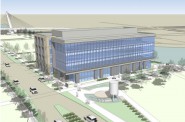 Feb 20th, 2015 by David Holmes
Feb 20th, 2015 by David Holmes
-
Milwaukee Leads Great Lakes Cities
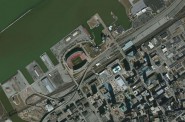 Feb 13th, 2015 by David Holmes
Feb 13th, 2015 by David Holmes
-
Milwaukee’s Clean Water Advantage
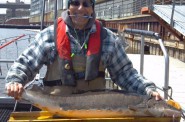 Jan 21st, 2015 by David Holmes
Jan 21st, 2015 by David Holmes

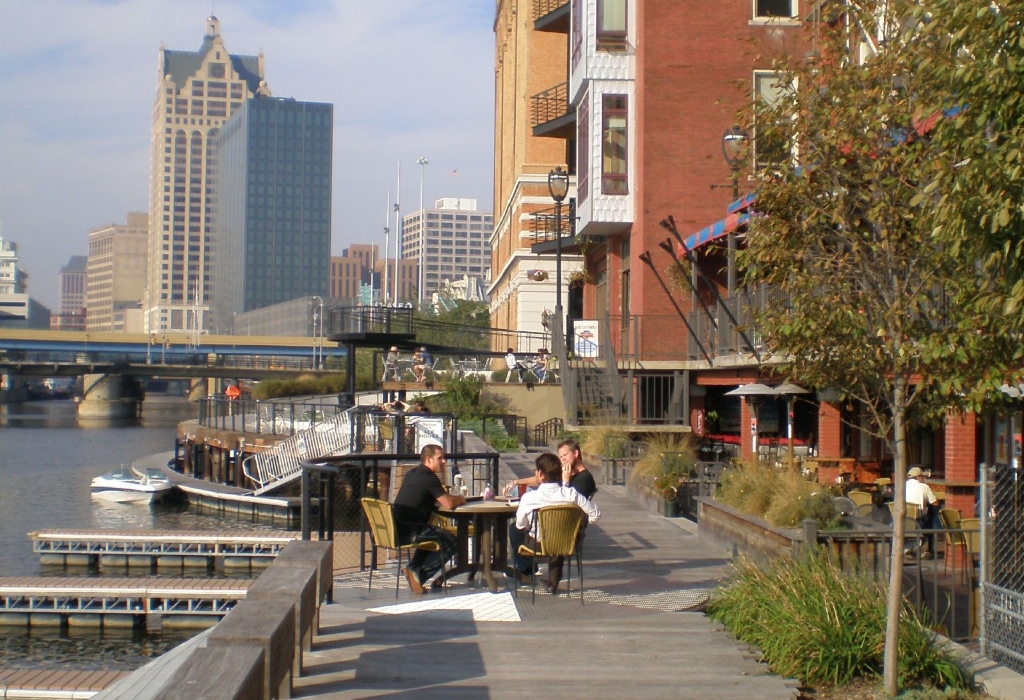
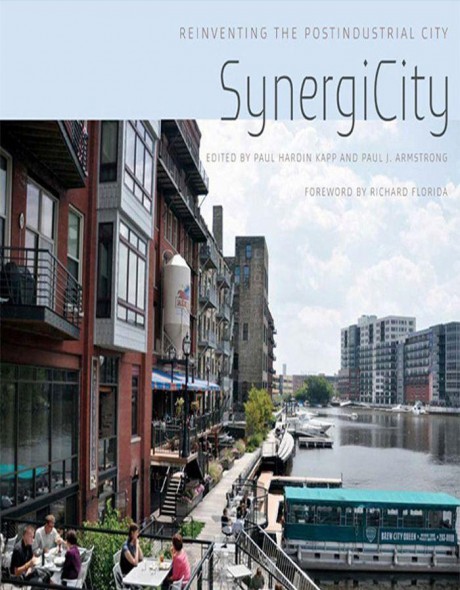
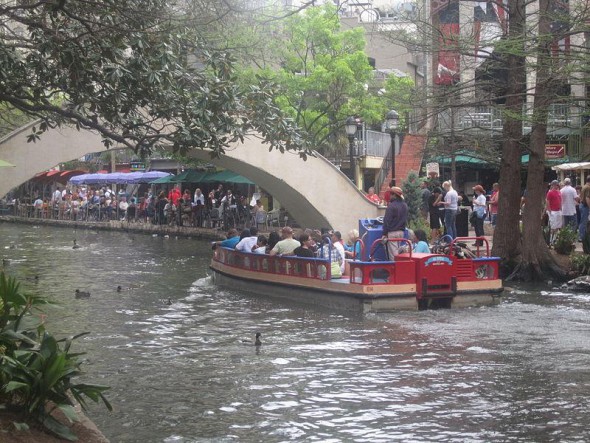




















San Antonio is a dump overall, so we win on that front.
I stayed at a hotel near the Alamo / riverwalk for a few days a couple years ago. I was working for most of the time and didn’t have a ton of time to explore, but from what I could tell, very few (or even no) people live in that area of San Antonio (downtown?). There are some hotels, souvenir shops, office buildings, a movie theater, and the Alamo, but no ‘neighborhoods.’ It seemed to me the San Antonio riverwalk was a sort of food court with a narrow/fake river running down the middle of it.
I lived in Milwaukee for three years and San Antonio four. I am Wisconsin born and bred and lived about half my 55 years in SE Wisconsin.
The San Antonio riverwalk is exactly a tourist attraction. Lots of restaurants and bars as well as several hotels, Hard Rock, etc. It is totally pleasant, excellent for people watching (you never know what celebrities might wonder by) and good food and drinks. I love it. But Disneyesque is the word. Not remotely authentic. The main parts downtown are the fake canal. The actual SATX River is not where the action is and it is not really navigable.
Downtown SA is okay, but not as well developed as Milwaukee. They do have the fine Majestic Theater, where I ushered for a season, and the usual fine arts, as well as the Alamodome and there are places to live, but it mostly is tourism based. It is warm weather of course, similar to New Orleans and Orlando.
Milwaukee is much more urban. The Milwaukee River is a working navigable waterway. There aren’t as many outdoor riverfront restaurants and bars as there could be, but in the summer it is very tranquil to sit in the afternoon sun nursing a craft beer and eating appetizers or lunch/dinner while watching the world go by. Whereas San Antonio has only the flatbottom tourist boats, Milwaukee has actual boats, pleasure craft, gondolas, crew, taxis, tour boats, sailboats, you name it. You can also fish the rivers here and I understand the Milwaukee estuary is home to some fine fishing. We have the Milwaukee Rowing Club, the Regatta on and on.
There really is no comparison.
Good article. I don’t think it’s right to say one is “better” than the other. That just gets petty. Now, my personal opinion is that San Antonio’s is very, very cheesy. Mostly chain restaurants and chintzy junk. That said, San Antonio’s is far more happening than Milwaukee’s, but I generally prefer the quietness of Milwaukee’s to the frat boy drunkeness of San Antonio.
I can’t emphasize enough that Milwaukee residents who have not toured the river, either by a, private craft, tour boat or renting a boat, at night are missing a view of the city that can’t be duplicated in any other way. The vitality of the shoreline and on water activities are amazing.
Fabulous Milwaukee! I’d like to propose a river boat festival/parade. That’s right, dress your boat up for the gala fun and viewing enjoyment of the tourists and WI residents. For all of the urban fans of Milwaukee and businesses lets brainstorm ideas centered around a river boat event that showplaces our terrific riverfront and business. It could be a way to add additional enjoyment of the river walk and generate revenue. Contact me to express our interest in participating. Thanks Ron rsekulski@msn.com
I haven’t been to San Antonio, but I have visited the Thridward Riverwalk, in fact was on the design team for the riverwalk. My expererince with the Thirdward Riverwalk continues to remind me of the total genuine public engagement one encounters while enjoying Milwaukee’s Thirward Riverwalk. Elswhere in the city not so much.
I’ve spent some time in San Antonio and couldn’t get past the obvious fact that their river isn’t really a river. They have done a great job with what they have.
I would like to know how Milwaukee can go about getting some of these river taxis. That would be an awesome addition as a lot of the areas along the river are seeing increased development.
Nice article. One thing not mentioned that I liked about the San Antonio river walk is the lack of street crossings, so I was pleased that the Third Ward section ducked under the bridges.
San Antonio native here who lives off our riverwalk. All of you are haters. There’s currently half a billion dollars in housing development being made near San Antonio’s riverwalk. My apartment has a view of our skyline and my rent is less than $600. Our river is no longer wide, but it supported life for hundreds of years and is more walkable than any other river walk. San Antonio is not a dump, it is currently booming and if you don’t believe that you haven’t been here for years. I live by the Tobin Center for the performing arts, the most beautiful venue in Texas.
I grew up in San Antonio, and currently live in Milwaukee, I have great memories of the Riverwalk in SA, and I’m slowly getting acquainted with the downtown area in Milwaukee. Never would I have even categorized these two areas into the same group. The San Antonio Riverwalk is a tourist attraction, and that’s fine, it serves it’s purpose as an attraction downtown for people to enjoy, it’s man-made, and built to be an attraction. I still go down to the Riverwalk every time I’m home for Christmas so that my son can see the lights down there. The Milwaukee River, is just that…a river, and that’s fine too, it’s a gorgeous place to be, especially in the summer time. But I don’t think it’s fair to compare the two, they’re both great cities in their own right, and their waterways serve 2 different purposes. It’s just now that more traffic is coming to the Milwaukee riverwalk, and I think it’s important to keep the balance of tourism and the beauty of the natural river there.
I won’t try to argue that the San Antonio Riverwalk is better than yours. But there are some incorrect statements in your article. 1) The arc of the river that goes through downtown where most of the hotels and restaurants are located is the ORIGINAL river, not a bypass; the small straight section connecting each end of the arc is the bypass. 2) The original Riverwalk in San Antonio was longer than 2 1/2 miles (if measured in river length rather than as the crow flies); it starts at Lexington north of downtown and meanders through downtown and past the King William District to South Alamo Street. One further comment since you criticized the San Antonio River for being so small, shallow, and having no fish: The San Antonio River begins only about 5 miles north of downtown (as the crow flies) on the University of the Incarnate Word campus; that is the reason it is narrow, has few fish, and is not navigable except by flat-bottomed boats, canoes, and kayaks. It takes some distance from its spring for any river to get up much flow and support much wildlife. By the way, work is about to begin in San Antonio on a second stream through downtown San Antonio–San Pedro Creek–which will be even more narrow and quaint than the Riverwalk and which flows into the Riverwalk about 4 miles south of downtown.
San Antonio’s Riverwalk extends much further than the tourist district, and goes right up to the art museum and and has lovely quiet beautiful spots. It’s cool in the summer and warm in the winter. And it leads right up to the Alamo, where one can pay one’s respects and learn about the history of relations between Texas and Mexico. I’m sure your river is cute, though, and when I visit my Aunt in Milwaukee, I’ll be sure to take a stroll through.
I’ve strolled San Antonio’s Riverwalk and appreciated it–it was very nice. I’ve lived near Milwaukee’s Riverwalk for years, and have come to love how it has such an in-depth and complex relationship to its city and many diverse architectural and natural features. Again, as many have noted, there is no reason to say one is “better” or to be petty about the comparison.
https://www.flickr.com/search/?details=1&w=39043411@N00&q=riverwalk
I appreciate all the comments made. However, I love both river-walks. I visited San Antonio and fell in love with it. last summer I took a cruise on the Milwaukee River at night and it was absolutely breath taking. I never knew we had such a gem in our great city. I am proud that we have several gems to show off. When comparing Milwaukee to San Antonio their river-walk is available year around. We have short summer seasons. Because of the long cold winters there is limited time for tourists to enjoy it. The question is how can we get the most out of it during the winter months?
I prefer Milwaukee’s riverwalk over san antonios- Milwaukee is a more modern and cleaner city with more sports teams and more cultural attractions to offer!